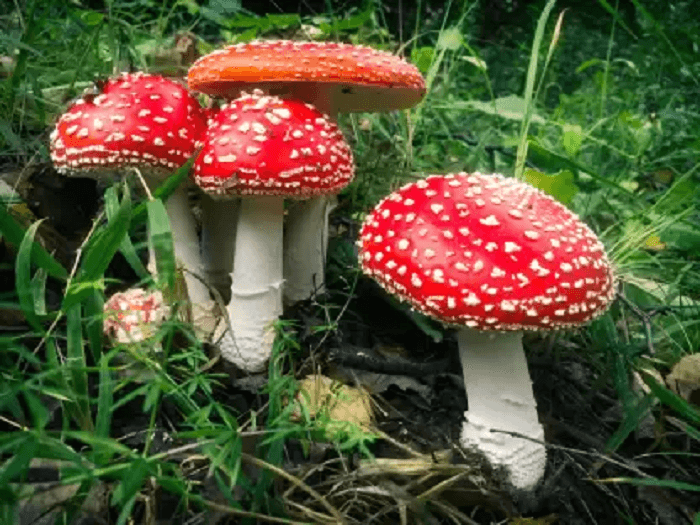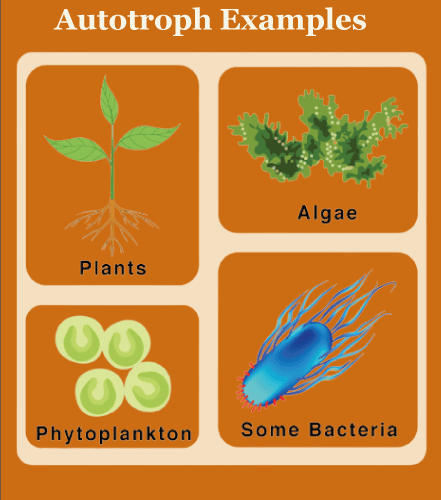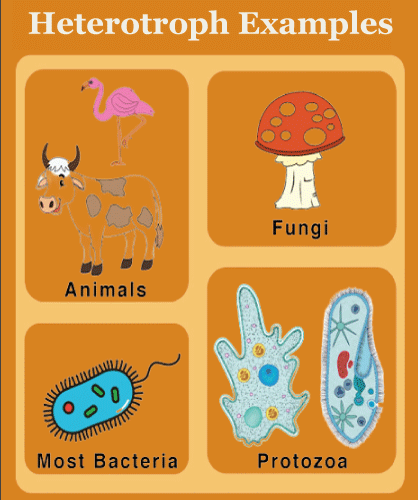Difference Between Autotrophic and Heterotrophic Modes of NutritionThere are two modes of nutrition based on the source and complexity of the food for the organisms. These two modes are - the autotrophic mode of nutrition and the heterotrophic mode of nutrition.
The term autotroph refers to the process in which an organism synthesizes its own food using energy from other sources like chemical reactions of light. In the process, autotrophs convert the inorganic molecules into organic compounds. The raw material used by autotrophs includes inorganic materials like water and sunlight. The organic compounds produced as a result are carbohydrates which provide energy to all living organisms. Since autotrophs do not rely on another organism for their nutrition or food, they are also called self-sustaining organisms or producers. On the other hand, an organism that lacks any ability to synthesize its own food is called a heterotroph. Heterotrophs depend on autotrophs for the consumption of already-produced organic compounds in order to gain energy and work properly. Since these organisms have to rely on other organisms for food and nutrition, they are also called consumers. Organisms that solely rely on consuming the producers belong to the second trophic level because autotrophs or producers belong to the first trophic level. Then come those organisms that do not consume the autotrophs; Instead, they feed upon the organisms belonging to the second trophic level. That is, they eat animals and not plant or plant products. When it comes to autotrophs, the section is divided into different levels. The different levels of heterotrophs are - herbivores, carnivores, omnivores, fungi, and also certain types of bacteria. 
AutotrophsOrganisms that have an autotrophic mode of nutrition are also called producers because they can produce their own food. They act as the primary source of food for all other organisms. Autotrophs also act as the primary source of energy for the biosphere. Photosynthesis and chemosynthesis are the two processes by which organisms convert light or chemical energy into chemical energy stored in organic molecules for the synthesis of food/glucose (organic compound). There are two categories under the autotrophic mode of nutrition. 1. PhotoautotrophsThese organisms use light as their source of energy. They capture light and convert light energy into chemical energy for the synthesis of glucose through the process of photosynthesis. Examples of photoautotrophs are green plants, algae, and some bacteria. Green plants have specialized structures to perform photosynthesis. These structures are called chloroplast, and they have a whole mechanism including all the necessary pigments and enzymes to carry out the process effectively. Chloroplast is found in the leaves of plants, and it contains a pigment called chlorophyll. Chlorophyll has a light absorbing ability so that it can absorb the sunlight, which plant uses to extract the light energy and later on convert it into chemical energy. The process of absorbing light energy and producing the organic compound takes place in leaves only. The process is done through a series of biochemical reactions. These reactions involve - i. Light-Dependent Reactions
ii. Light Independent Reactions
2. ChemoautotrophsThese organisms use chemical reactions as the source of energy for carrying out chemosynthesis. Examples of chemoautotrophs are some bacteria and archaea living in extreme environmental conditions like deep sea vents, hot springs, or acidic soil. Chemoautotrophs are also called chemolithotrophs because they have to ability to oxidize inorganic compounds in order to obtain energy. They do not rely on photosynthesis. Their metabolism has the unique ability to extract energy from the chemical reactions happening in the body and synthesize the organic compounds by utilizing that energy. The organic compounds, just like photoautotrophs, provide them with energy to function properly, and they are essential for the survival and growth of the organism. The inorganic compounds which are used by chemoautotrophs include ammonia, hydrogen gas, nitrites, iron, hydrogen sulfide, etc. These inorganic compounds are oxidized inside the chemoautotroph's body, and energy is harnessed. The inorganic compounds mentioned earlier are good examples of electron donors to power metabolic reactions. 
HeterotrophsOrganisms having heterotrophic modes of nutrition are also called consumers because they cannot make their own food and rely on other organisms for energy. Instead of synthesizing sugars, they have the mechanisms to break down the complex food made by producers into simpler molecules. Cellular respiration performs the task of breaking food, and as a by-product, energy is released. This energy is used by the organisms to perform other life tasks. Heterotrophs are also classified into different categories according to their source of food and mode of ingestion. Different categories of heterotrophs are as follows: 1. Herbivores - organisms that can only consume the primary producers like plants and algae or they eat only plant products are called herbivores. Examples of herbivores are goats, cows, deer, etc. These organisms have some very special organs and adaptations that help them in extracting nutrients from plant materials very effectively. Some of these adaptations include the presence of a beak and specialized teeth structure for properly chewing or grinding the food. They also have an elongated digestive tract with certain specialized organs for the proper digestion of plant material. The structure of the digestive system maximizes nutrient absorption. They also have microbial symbionts present in their systems to break down the complex macronutrients present in the plant material into simpler compounds. 2. Carnivores - organisms that feed herbivores are called carnivores. They are meat-eating organisms. Examples of carnivores are lions, tigers, cheetahs, etc. 3. Omnivores - organisms that can eat both plant/plant products, as well as animals, are called omnivores. Examples of omnivores are bears, humans, etc. 4. Saprotrophs - organisms that secrete enzymes to digest organic matter in the environment. 5. Detrivores - organisms that rely on dead plants and dead animals for their nutrition are called detrivores. 6. Parasites - organisms that live or are inside other organisms and feed from their bodies by harming them. 
ConclusionThe most important difference between autotrophs and heterotrophs is that autotrophs do not depend on other organisms for their food or nutrition source. They have the ability to produce their own food. On the other hand, heterotrophs lack the mechanism to produce their own food and are, therefore, always dependent on other organisms for their food. Another difference between the two types of organisms is autotrophs use simple inorganic molecules to synthesize complex molecules (organic molecules). On the contrary, heterotrophs take in complex organic molecules and break them down it into simpler organic molecules. Autotrophs play a significant role in the food chain and carbon cycle by being at the first trophic level, whereas heterotrophs occupy the second or third trophic level in the food chain. Heterotrophs are also equally significant because they help in recycling carbon dioxide through respiration. Difference Between Autotrophs and Heterotrophs
Next TopicDifference Between
|
 For Videos Join Our Youtube Channel: Join Now
For Videos Join Our Youtube Channel: Join Now
Feedback
- Send your Feedback to [email protected]
Help Others, Please Share










